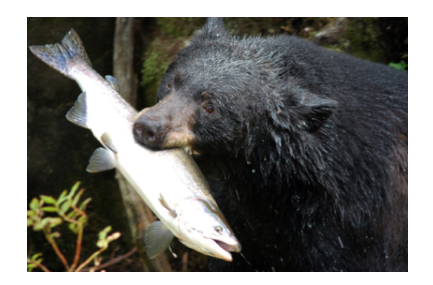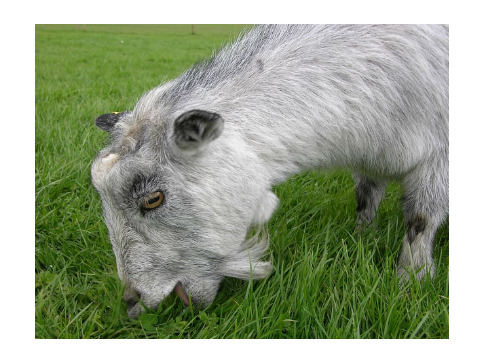Table of Contents
Introduction
Heterotrophic nutrition involves obtaining pre-formed organic molecules from other organisms. These organisms are called heterotrophs or consumers.
Heterotrophic nutrition is the mode of nutrition in which organisms obtain preformed organic molecules from external sources as their food. Unlike autotrophic organisms that can synthesize their own organic compounds through processes like photosynthesis, heterotrophs rely on consuming other organisms or organic matter for their energy and nutrient requirements.
Heterotrophic nutrition allows organisms to obtain the energy and nutrients they need for growth, development, and maintenance. It involves the ingestion, digestion, absorption, and assimilation of organic molecules from external sources. Each type of heterotrophic nutrition has specific adaptations and mechanisms to obtain and process food depending on the organism’s characteristics and ecological niche.

Heterotrophic nutrition can be classified into several types:
Holozoic Nutrition
Holozoic nutrition is the type of nutrition observed in many animals, including humans. In holozoic nutrition, organisms ingest solid or liquid food and then digest it internally through various processes.
Holozoic Nutrition in Amoeba
Amoeba, a unicellular organism belonging to the group of protists, exhibits holozoic nutrition. Amoebas are characterized by their ability to form temporary finger-like projections called pseudopodia, which they use for locomotion and capturing food. When an amoeba encounters a suitable food source, it extends its pseudopodia around the food particle, engulfing it and forming a food vacuole. The food vacuole then fuses with lysosomes, which contain digestive enzymes. These enzymes break down the food particles into simpler molecules, which are then absorbed into the cytoplasm of the amoeba. The absorbed nutrients are utilized for energy production, growth, and other metabolic processes. Undigested waste materials are expelled from the cell through the process of exocytosis.
Types of Holozoic Organisms
Holozoic nutrition is commonly observed in a wide range of organisms, including animals, protists, fungi, and even certain plants.
Animals
Most animals exhibit holozoic nutrition. They have specialized digestive systems that allow them to ingest, digest, and absorb nutrients from ingested food. Animals have evolved various adaptations to efficiently process different types of food, depending on their dietary preferences. For example, herbivores consume plant material, carnivores prey on other animals, and omnivores have a mixed diet of both plant and animal matter.
Protists
Various protists, which are a diverse group of eukaryotic microorganisms, obtain their nutrition through holozoic means. For instance, amoebas, such as the common Amoeba proteus, use pseudopodia to capture and engulf smaller organisms or organic particles in their environment. Other protists, like paramecia and ciliates, use specialized structures like cilia and oral grooves to capture and ingest food particles.
Fungi
Fungi are heterotrophic organisms that primarily obtain their nutrition through absorption. However, some fungi exhibit holozoic nutrition under certain conditions. For example, certain species of fungi in the phylum Zygomycota, such as Pilobolus, exhibit holozoic nutrition. These fungi capture and digest organic matter, including dead insects or other small organisms, using specialized structures called sporangia. The sporangia release spores that can attach to the surface of potential food sources, enabling the fungi to derive nutrients from the digested organic material.
Carnivorous Plants
Although plants are primarily autotrophic, some species of plants have evolved carnivorous adaptations to supplement their nutrient requirements in nutrient-poor environments. Carnivorous plants, such as the Venus flytrap, pitcher plants, and sundews, exhibit holozoic nutrition. They have modified structures, such as traps or sticky surfaces, to capture and digest small insects or other prey. The captured prey provide additional nutrients, particularly nitrogen, which is essential for plant growth and development in nutrient-deficient habitats.
Holozoic nutrition allows organisms to obtain a diverse range of nutrients from various food sources. It involves the ingestion, digestion, absorption, and assimilation of food
Saprophytic Nutrition
Saprophytic nutrition is seen in saprophytes or saprotrophs, which obtain nutrients from dead organic matter. Saprophytic organisms, like fungi and certain bacteria, secrete enzymes onto the decaying matter, breaking it down into simpler compounds. They then absorb the nutrients through their mycelium or hyphae.
Parasitic Nutrition
Parasitic nutrition involves one organism (parasite) living at the expense of another organism (host). Parasites obtain nutrients from the host’s body fluids or tissues, often causing harm or disease to the host. Examples include ticks, fleas, and internal parasites like tapeworms.
Parasitic nutrition is a type of heterotrophic nutrition in which an organism, known as a parasite, obtains its nutrition from another organism, known as the host. The parasite relies on the host for its survival and derives nutrients directly from the host’s body fluids or tissues.
There are different types of parasites, including internal parasites and external parasites. Internal parasites, such as intestinal worms, reside within the host’s body and obtain nutrients from the host’s digestive system or other organs.
External parasites, such as ticks or lice, feed on the host’s external surfaces, such as the skin or feathers, and extract nutrients from the host’s blood or skin secretions.
Symbiotic Nutrition
Symbiotic nutrition is a mutually beneficial relationship between two different species. In symbiosis, both organisms derive benefits from each other’s presence. Mutualistic symbiosis, like the relationship between flowering plants and pollinators, demonstrates mutual dependence and nutritional exchange.
Keywords
Herbivores
Herbivores are organisms that primarily consume plants or plant-based materials as their source of nutrition. They have adaptations such as specialized teeth and digestive systems to efficiently process plant matter. Examples of herbivores include cows, deer, rabbits, and many insects.

Carnivores
Carnivores are organisms that primarily consume other animals as their source of nutrition. They have adaptations for hunting, capturing, and consuming other animals. Their teeth and digestive systems are adapted for consuming and digesting animal flesh. Examples of carnivores include lions, wolves, snakes, and spiders.

Omnivores
Omnivores are organisms that have a diet consisting of both plant-based materials and animal-based materials. They have adaptations that allow them to consume and digest both plant matter and animal flesh. Omnivores have a wider range of food options compared to herbivores and carnivores. Examples of omnivores include humans, bears, raccoons, and pigs.
It’s important to note that while these classifications provide a general understanding of an organism’s dietary habits, there can be variations and overlaps. Some organisms may have a primarily herbivorous or carnivorous diet but occasionally consume other types of food.
FAQs on Heterotrophic Nutrition
What is heterotrophic nutrition?
Heterotrophic nutrition is a mode of nutrition where organisms obtain their energy and nutrients by consuming organic matter from external sources.
What are examples of heterotrophs?
Examples of heterotrophs include animals, fungi, and most bacteria, as they rely on consuming other organisms or organic matter for their nutrition.
What is the difference between autotrophic and heterotrophic nutrition?
Autotrophic nutrition is the ability of organisms to produce their own food using sunlight or inorganic substances, while heterotrophic nutrition involves obtaining food from external sources.
How do heterotrophs obtain energy?
Heterotrophs obtain energy by breaking down complex organic molecules, such as carbohydrates and fats, through processes like digestion and cellular respiration.
What is the importance of heterotrophic nutrition?
Heterotrophic nutrition is important for sustaining the energy flow in ecosystems as heterotrophs play a crucial role in decomposing organic matter and recycling nutrients.
How do parasites obtain nutrients?
Parasites obtain nutrients by living and feeding on other living organisms, known as hosts, and directly extracting nutrients from their body fluids or tissues.
Can heterotrophs survive without autotrophs?
No, heterotrophs rely on autotrophs to provide the initial source of organic matter in ecosystems through processes like photosynthesis. Autotrophs are the primary producers that provide food for heterotrophs.








